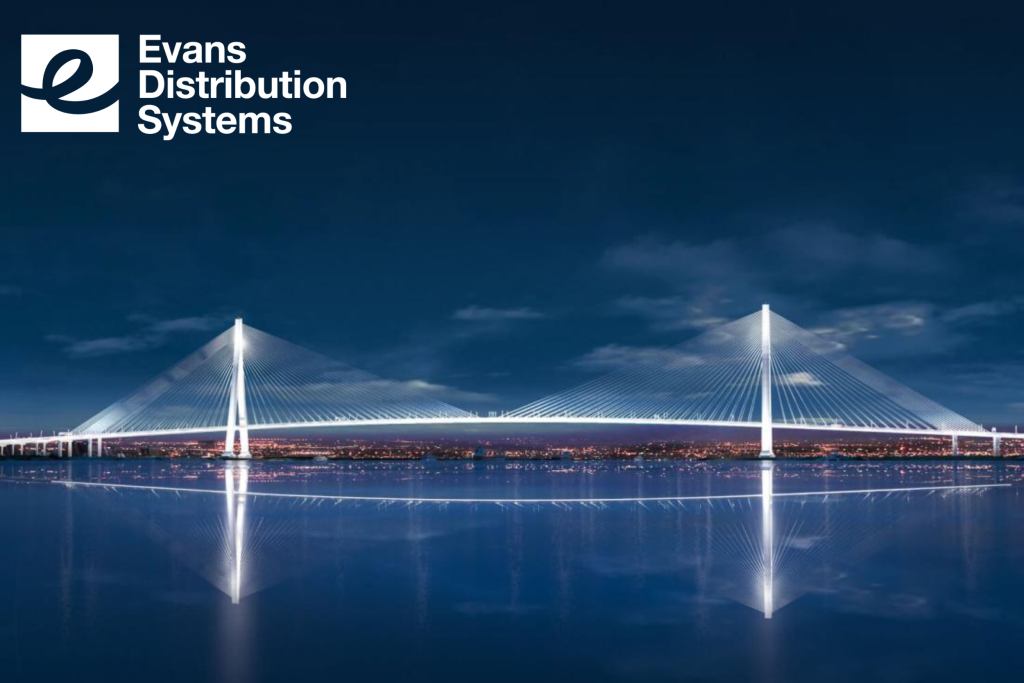
After six years of construction, the Gordie Howe International Bridge now connects Ontario and Michigan. This significant infrastructure project supports the second-largest trade relationship in the world, between Canada and the U.S., where trucks carry more than half of the cross-border goods. The new bridge promises to make freight transportation more efficient and environmentally friendly, benefiting U.S. trade and Detroit’s freight industry. Let’s look at the future of Detroit freight transportation.
Efficiency
One of the main benefits of the Gordie Howe Bridge is time efficiency. The bridge will provide a direct, freeway-to-freeway connection between both countries. The entire route will employ the latest intelligent transportation systems, logistics, and security technology including Roadway lighting, Onsite weather monitoring station, and ITS intelligent video that will capture unauthorized movement near trucks. The new route is estimated to save about 850,000 hours per year for trucks, translating into billions of dollars in savings over the bridge’s lifetime.
The new bridge aims to reduce congestion at existing border crossings, such as the Ambassador Bridge and the Detroit-Windsor Tunnel. By providing an additional crossing point, the Gordie Howe Bridge will help alleviate traffic bottlenecks and improve the overall flow of goods.
Community Support
The Gordie Howe Bridge provides a new future not only for shipping but for the surrounding areas and communities. A robust transportation and distribution cluster provides local employment opportunities for Canadian and American workers. These new jobs would range from routine manual tasks to cutting-edge positions in information and communications technology. The cluster would enhance the competitiveness of other industries in the region, including manufacturing, agrifood, and ecommerce.
Additionally, the bridge is expected to have a positive environmental impact. By optimizing traffic flow and reducing truck idling time, the project aims to lower greenhouse gas emissions. The implementation of advanced technologies will further contribute to a cleaner and more sustainable transportation network.
Logistics Growth
The bridge represents growth and opportunity. It’s a beacon of international trade that ensures an efficient flow of goods between countries. Evans Distribution Systems has a strong history of partnering with Canadian companies to store and transport goods across the border. Canadian businesses often benefit from Evans’ 1-million-square-foot Foreign Trade Zone warehousing, which allows customers to defer duties until the goods are released.
Evans’ excitement for the bridge cannot be understated. While repainting the HQ office, a cool project emerged! We worked with a professional artist to mural our conference room. The result is a symbolic representation of the Gordie Howe Bridge as a gateway to new growth opportunities for Evans Distribution Systems. With Evans having two facilities neighboring the bridge, located on I-75 and Fort Street, we have a front-row seat of a city landmark being built. Our truck moves us into the future but never leaves our history and brand values behind.
Conclusion
The Gordie Howe International Bridge project presents a unique business opportunity. It brings economic benefits to both Canada and the U.S., and it boosts the future economies of Windsor-Essex and Detroit. By planning and exploring new opportunities, the region can maximize the economic benefits from this investment for many years.
In summary, the Gordie Howe International Bridge is more than just a physical structure; it is a strategic asset that promises to enhance trade, create jobs, and foster a more sustainable and efficient transportation network. Its impact will be felt not only in the immediate region but across North America as it sets a new standard for cross-border infrastructure.
